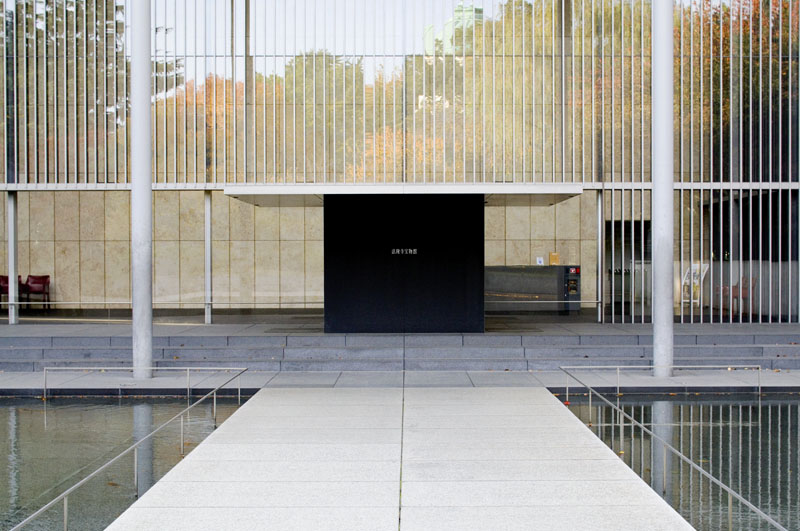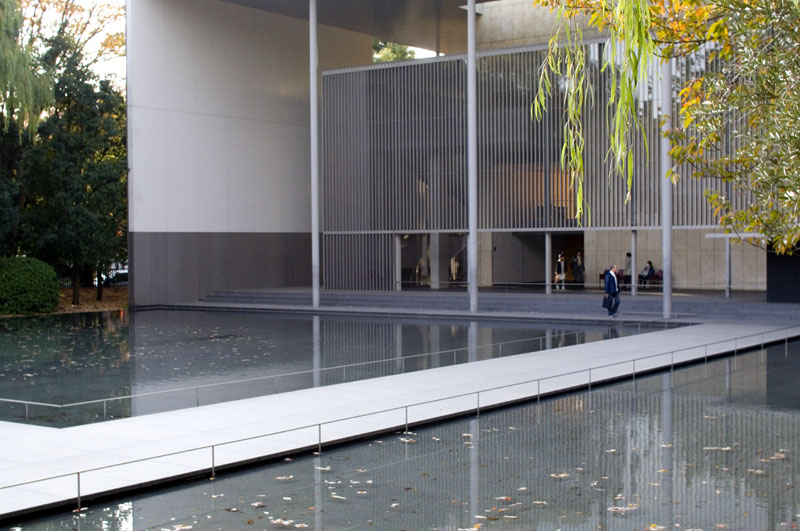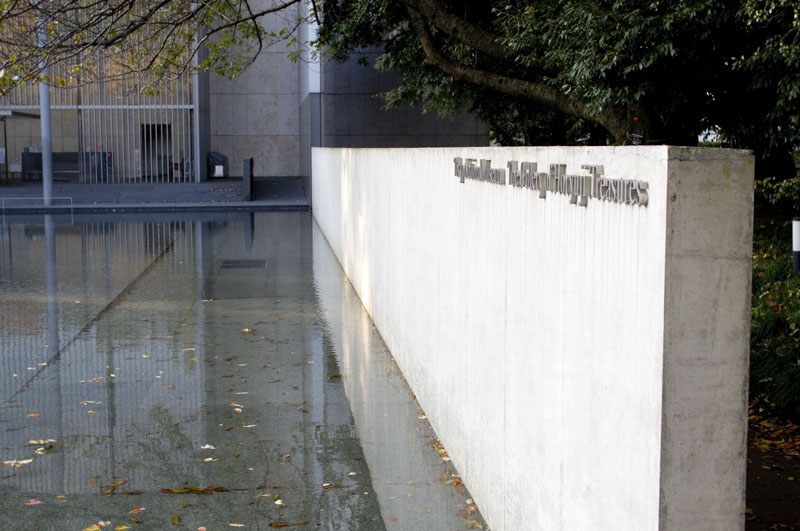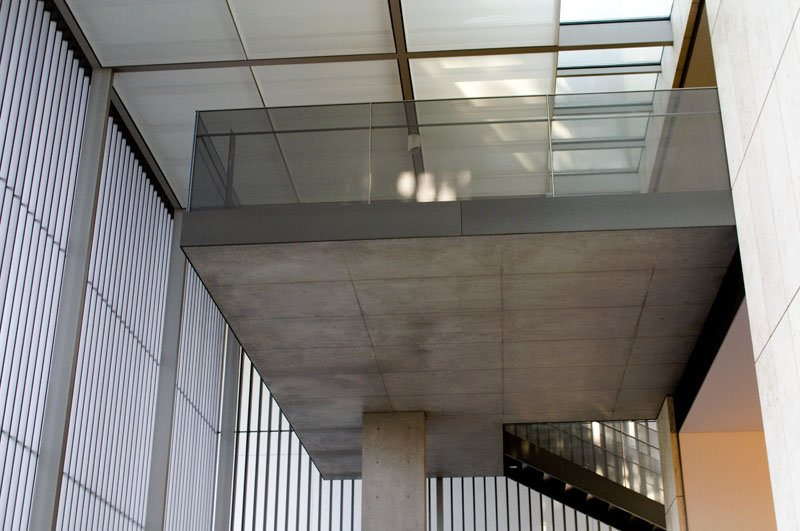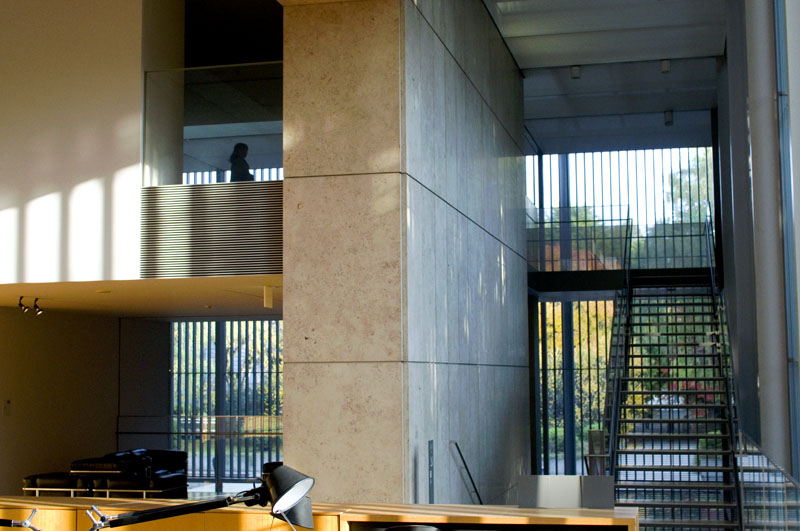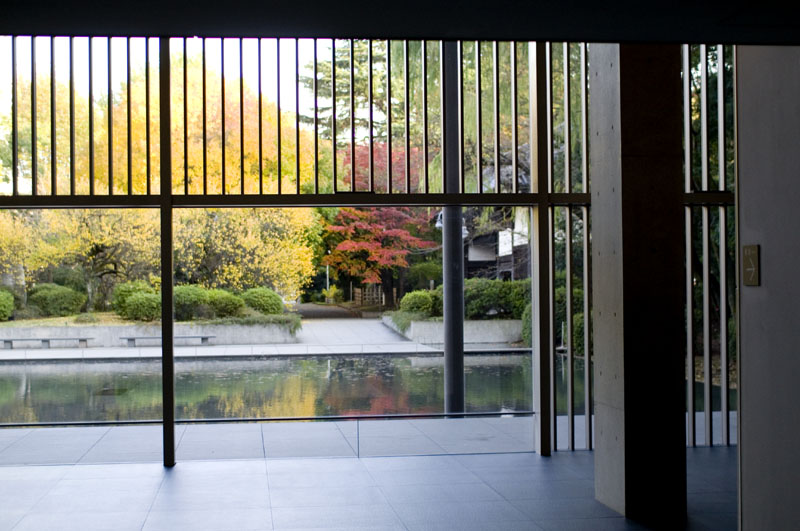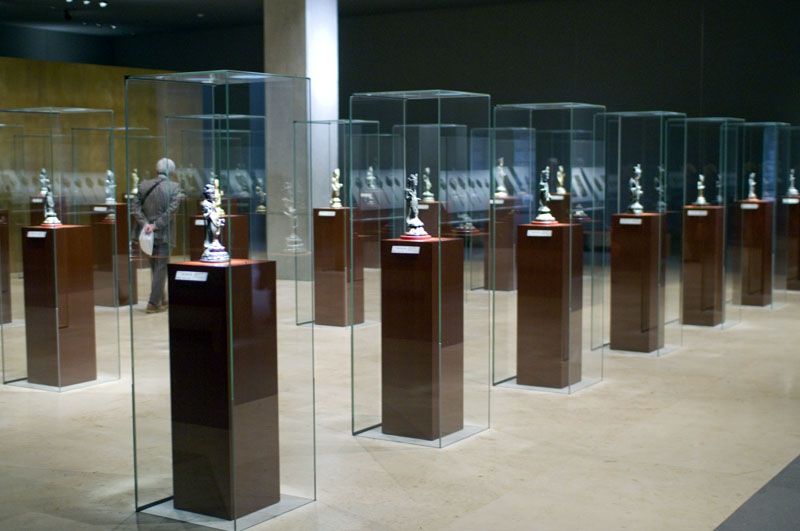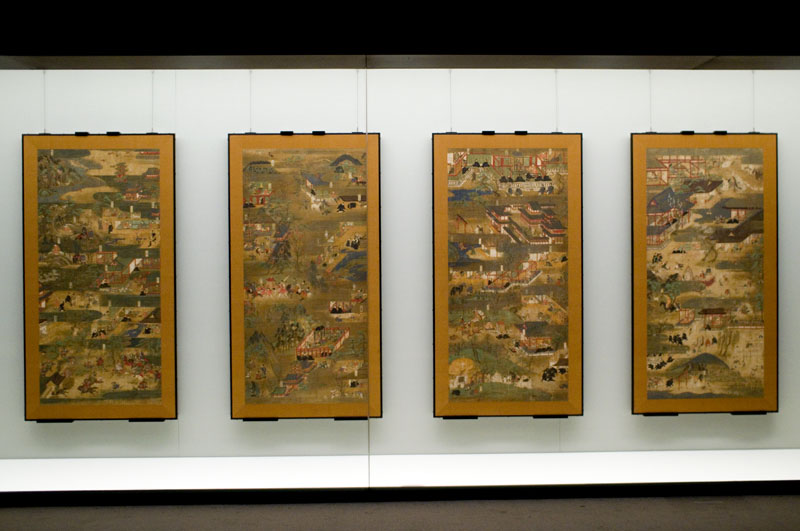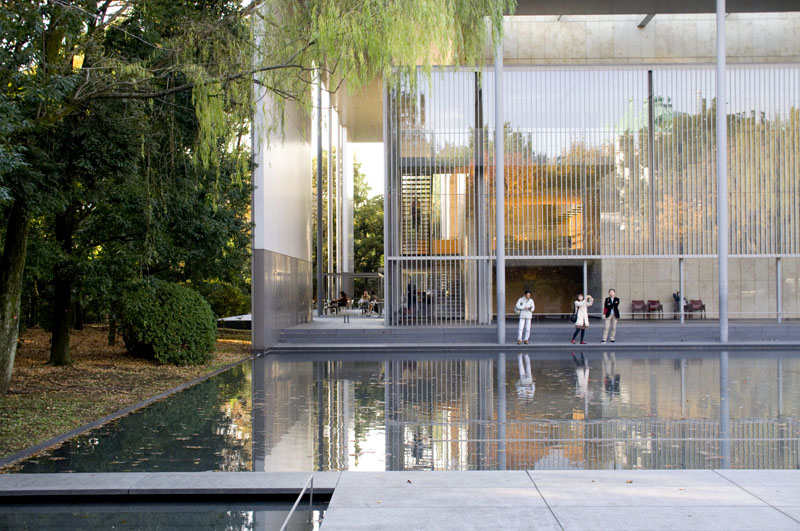
The Gallery of Horyuji Treasures is part of Tokyo National Museum in Ueno Park. It houses more than 300 historical artifacts, mainly from the seventh and eighth centuries, which were donated to the Imperial Household by Horyuji Temple in Nara in 1878. The building was completed in 1999 and is the work of architect Yoshio Taniguchi, who was also responsible for the 2004 expansion of the Museum of Modern Art in New York.
The building serves as a space to both permanently preserve the collection and exhibit the artwork to the public. The exhibition and preservation areas are located inside the building's central core, which is enclosed by a thick wall of polished stone. Surrounding the core is the brightly lit outer portion of the building, which is wrapped in glass. This section houses the entry hall, cafeteria, and research rooms. A shallow reflecting pool stands in front of the building, with an off-center concrete pathway leading to the entryway.
Highlights of the gallery's collection include a room full of gilt-bronze Buddhist statues and another room devoted to seventh-century Gigaku masks used in theatrical dance performances. Other exhibition spaces display wooden and lacquerware works, textiles, calligraphy, and metalwork from the collection.
